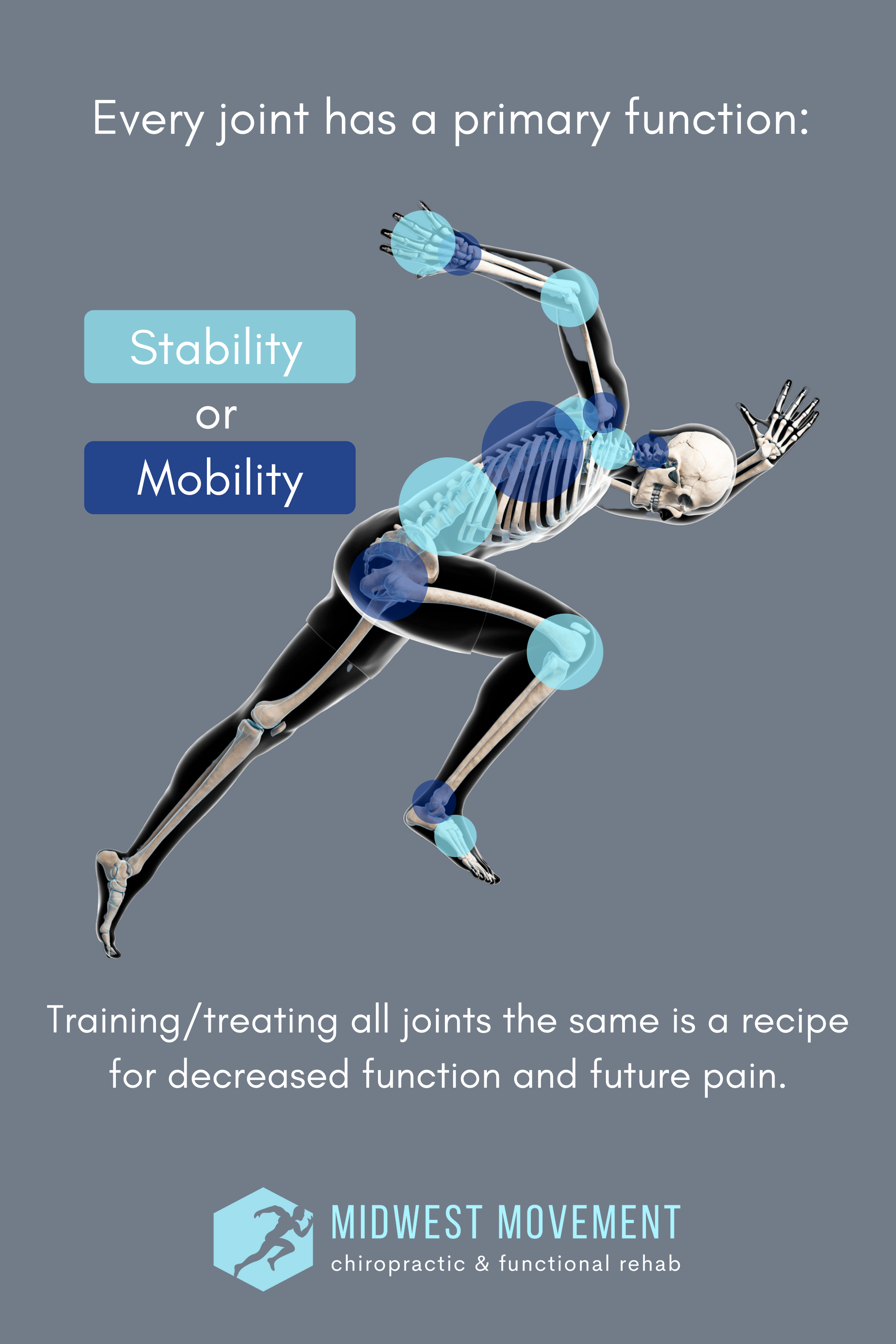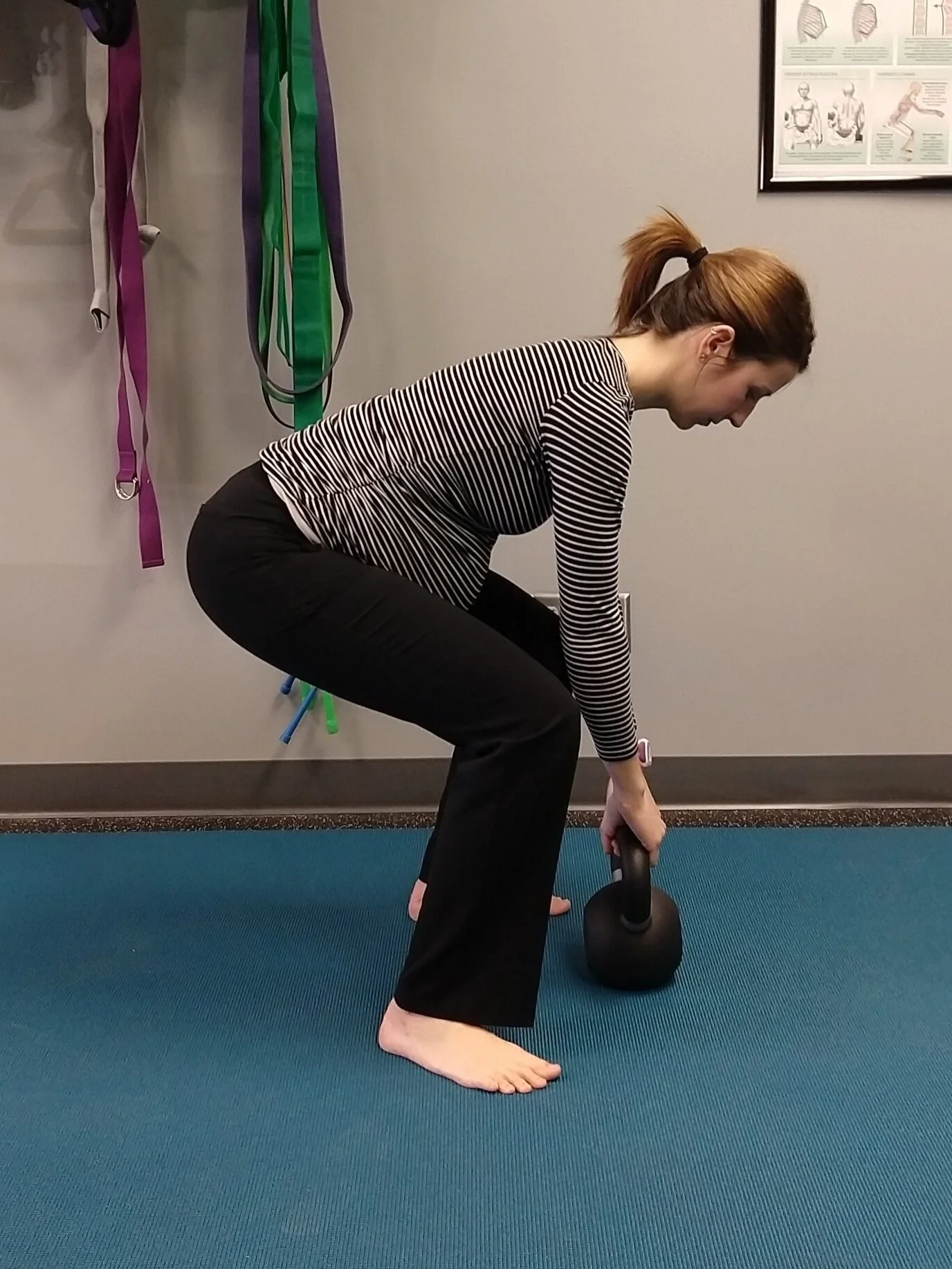3 Ways to Pick Things Off the Ground Without Hurting Your Low Back
Have you ever picked up a box, a child, or even something as light as a pencil off the ground and then had immediate low back pain?
It’s more common than you might think, but just because it happens to a lot of people doesn’t mean that it makes it any easier when it happens to you. Here’s why the way you’re (probably) currently picking things off the ground isn’t helping your low back pain.
The body’s natural system
The body works in an alternating series of stable and mobile joints. Stable joints move in only one plane of motion (i.e. the elbow only flexes and extends like a hinge), and mobile joints move in multiple planes of motion (i.e. the shoulder can move forward and backward, in front of your body and behind, and also rotate).
This pattern alternates joint by joint, so we should see a mobile ankle, followed by a stable knee, followed by a mobile hip, followed by a stable low back, and so on. This alternating pattern is shown in the graphic of the sprinting man.
Where things go wrong
We run into problems when we ask joints to act in ways they weren’t designed to.
The reason a lot of people have low back pain is because this pattern gets disrupted and often people will end up with tight hips (remember the hips should be mobile) and a low back that moves too much (the low back should be stable). If you or someone you know has experienced low back pain after lifting an object from the ground, there’s a good chance that this happened because the low back was not stabilized very efficiently before picking the object up.
1. The deadlift. Dr. Whitney’s neutral back, wide stance, and hip hinge helps to protect her low back when she’s picking up a kettle bell.
We don’t like to see people bend with a lot of flexion in their low back to lift objects because it loads the spine in a non-ideal position, which can lead to muscles and joints getting unnecessarily overworked.
So, how can you work on keeping your low back more stable, especially when you have to get all the way down to the floor?
Here are three ways:
2. The lunge. Dr. Whitney keeps her back neutral and uses her hips to get down to the floor to pick up the ball.
3. The teeter. Just like with the other two options, Dr. Whitney keeps her spine neutral while teetering. She uses her back leg to help her balance as she picks up the golf ball.
The Deadlift
If you’re going to lift up something heavy, like a child, box, or weight, then this is the best of the three options. You get to use both legs symmetrically, which is great for generating more power. Focus on shifting your hips backward, keeping your spine neutral, and getting a good brace (like you’re going to get punched in the gut) before standing up.
The Lunge
This is a better option if the object you want to pick up isn’t quite as heavy, like books or toys. Since you won’t have quite as much stability when your hips are in a split-stance, the lunge is a good choice if you need to pick up a lot of lighter things. Just like with the deadlift, you’ll still want to focus on maintaining a neutral spine and getting a good brace before lifting.
The Teeter
Since this move involves standing on only one leg, it is the hardest position to balance in. That makes the teeter best for picking up very light objects, like pens, papers, or golf balls. And of course, you’ll still want to keep a neutral spine and brace before teetering — you just won’t need as much of a brace as you would if you were picking up something heavy.
Try to integrate the deadlift, lunge, and teeter into your life! Your low back will thank you!
Is your low back giving you trouble? Maybe you have questions on how to lift more efficiently? Schedule an appointment with one of our chiropractors at the link below.




